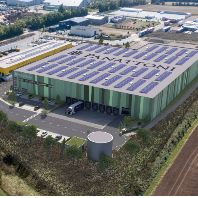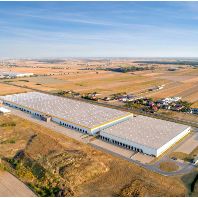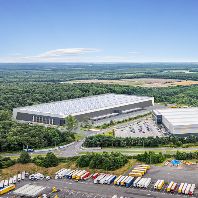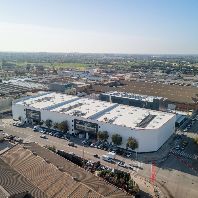According to a study by bulwiengesa analysis company, “Logistics and Real Estate 2015: Many angles. One study,” Germany accounted for nearly 25% of the €940 bn turnover in the European logistics industry in 2015, making it the leading market for logistics real estate on the continent. Analysing the trends in the market between 2010 and 2014, the study provides a comprehensive overview of the German property development market, delivering 15.3 million m² of logistics space across the country, which represents a growth of 79% during the period.
Having reached a low point in 2010 (2.1 million m²) in response to the financial crisis, the logistics real estate market has experienced a strong resurgence, doubling in size by 2012 (3.7 million m²) and reaching a new peak in 2014 (3.8 million m²). While bulwiengesa’s estimate of roughly 3.6 million m² of new industrial space for 2015 represents a decrease of 5.5%, the logistics property market is on track to surpass the five-year average of 3 million m² per year.
Property developers lead but don’t dominate the market
When analysing the activity of the types of developers of logistics real estate, specialist property developers claim a 40% share of the market, accounting for 6 mn m² out of the 15.3 million m² developed between 2010 and 2014. Retail logistics operators register just over 25%, followed by logistics operators and owner-occupiers at 17% and 16%, respectively, and CEP (courier, express, parcel) companies with a mere 2.4%. The variant share by developer type across the report period reflects changes in the market, such as the growth of e-commerce, as well as the preference of leasing versus owning logistics space by non-property developers.
When looking at the top overall developers, the Goodman Group ranks first with more than 1.2 million m² and is the only property developer in the top five developers. Retail logistics operators—the Schwarz Group (657,000 m²), the EDEKA Group (388,000 m²) and the REWE Group (361,000 m²)—rank next with the Volkswagen Group (353,000 m²) rounding out the top five as the only owner-occupier in the top 20. Project developers complete the list of the top 10 and several logistics operators rank in the top 20.
Top regions for logistics
In the study, bulwiengesa redefined Germany’s logistics regions by analysing the real estate economic activities of each region, such as building activity, investments, take-up and other metrics. This has led to the identification of 28 logistics regions. Based on this analysis Hamburg, Berlin, Halle/Leipzig, Rhine-Main/Frankfurt and Dusseldorf represent the top five logistics regions of 2015.
Property developers set the example on sustainability
While just over 20% of all new logistics properties were certified with a green label between 2010 and 2014, over 40% of new projects by property developers were certified, which has been driven by customer and investor demand for durable and resource-efficient properties. However, analysis by bulwiengesa shows that other developer types also often construct their properties to the same sustainability standard but opt not to seek certification due to the resources required.
Similarly, the study found that only 20% of new properties are developed on converted brownfield sites. Again property developers showed the largest appetite for brownfield development at around 25%. The study also illustrates a great variance between the different logistics regions due almost exclusively to the availability of land for new developments. For example, roughly 80% of logistics developments in the densely populated Rhine-Ruhr region were realised on brownfield-sites between 2010 and 2014. Other densely populated regions, such as Dortmund, Cologne and Saarbrucken, averaged between 40% and 50%. In contrast four logistics regions, Bad Hersfeld, Koblenz, Magdeburg and Nuremberg, registered virtually zero brownfield developments.
For more information, download the full study by bulwiengesa here.













